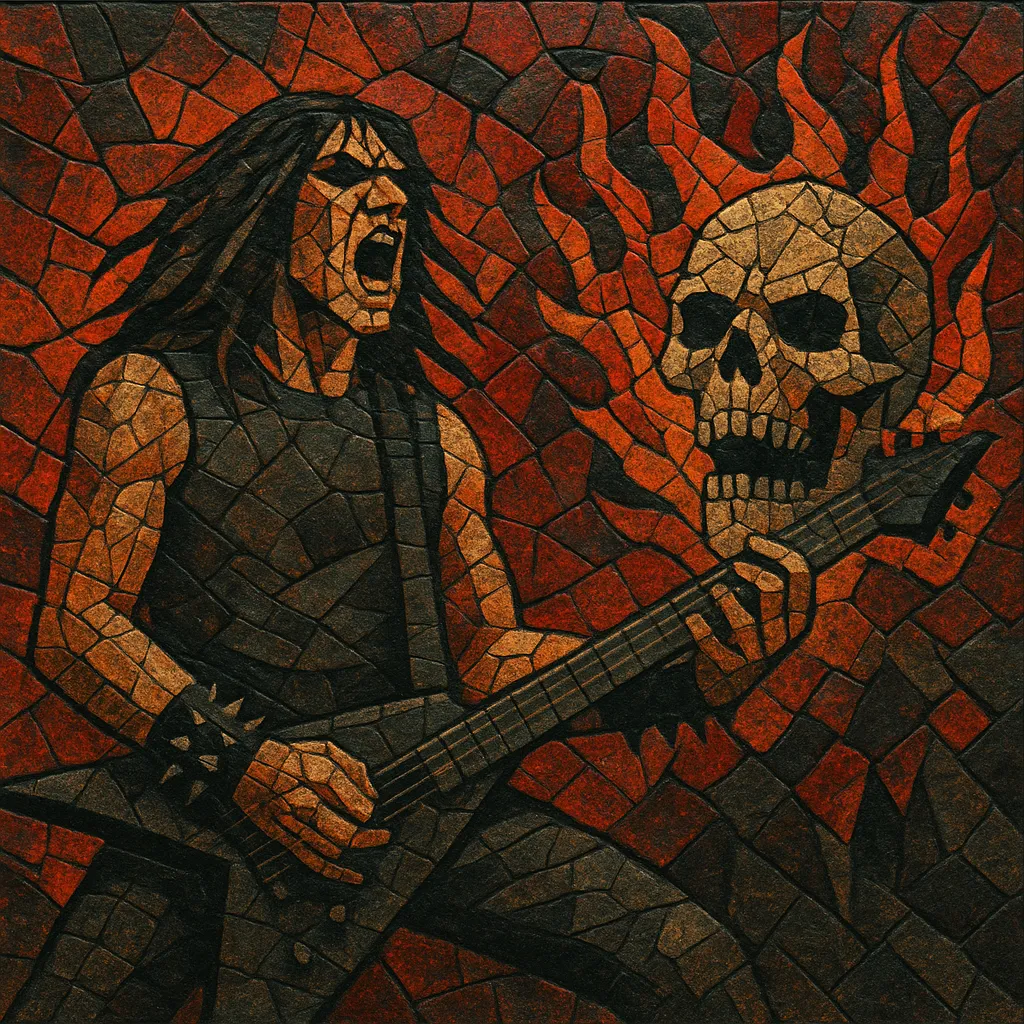
Thrash metal is a fast, aggressive, and riff‑driven style of metal characterized by high-tempo, palm‑muted downpicking; tightly synchronized rhythm sections; and abrasive, shouted or barked vocals. Songs typically sit in the 180–220+ BPM range, with rapid alternate picking, chugging power‑chord riffs, and precise double‑bass drumming.
Harmonically, thrash favors minor tonalities, chromatic movement, tritone tension, and modal flavors such as Phrygian and Aeolian. Structures are riff-centric and often feature brisk tempo changes, sharp stops/starts, and technically demanding solos that draw on pentatonic, natural/harmonic minor, and modal runs. Lyrically, thrash is frequently anti‑authoritarian and socio‑political, addressing war, corruption, media manipulation, and personal alienation.
Compared to speed metal, thrash is more percussive, staccato, and palm‑mute heavy; compared to death metal, vocals are generally less guttural and the riffing slightly less dissonant, but the intensity and precision remain core to the style.
Thrash metal crystallized in the early 1980s in the United States, especially around the San Francisco Bay Area and Los Angeles, where young bands fused the speed and riff craft of the NWOBHM with the raw ferocity of hardcore punk. Early milestones include Metallica’s "Kill ’Em All" (1983) and Slayer’s "Show No Mercy" (1983), which defined the acceleration, downpicked precision, and harsher vocal edge that set thrash apart from traditional heavy metal and speed metal.
By the mid‑1980s, thrash reached full artistic and commercial momentum. Canonical releases such as Metallica’s "Master of Puppets" (1986), Slayer’s "Reign in Blood" (1986), Megadeth’s "Peace Sells... but Who’s Buying?" (1986), and Anthrax’s "Among the Living" (1987) codified the style’s speed, tightness, and politically charged lyrics. Parallel scenes flourished: the Bay Area (Exodus, Testament), New York/New Jersey (Anthrax, Overkill), and the German "Teutonic" wave (Kreator, Sodom, Destruction). Brazil’s Sepultura pushed a darker, heavier edge that would feed into death and groove metal.
Thrash cross‑pollinated with hardcore to form crossover thrash (e.g., D.R.I., S.O.D., Suicidal Tendencies), while technical/sophisticated variants (technical thrash) emphasized odd meters, complex harmony, and progressive arrangements. The aggression and speed of thrash strongly influenced first‑wave death metal and grindcore, helping shape the broader "extreme metal" continuum.
In the early 1990s, some thrash bands pursued a more polished or groove‑oriented sound (e.g., Metallica’s "Black Album"), while grunge and alternative metal reshaped the mainstream. Although the style’s commercial presence dipped, dedicated scenes persisted worldwide, with Kreator, Overkill, Testament, and others sustaining momentum.
The 2000s brought a thrash revival led by younger acts (e.g., Municipal Waste, Warbringer, Evile) and a renewed vigor from veteran bands (e.g., Slayer, Megadeth, Testament). Modern thrash often blends classic rhythmic intensity with contemporary production, while continuing the genre’s hallmark focus on angular riffs, socio‑political themes, and high‑velocity precision.

